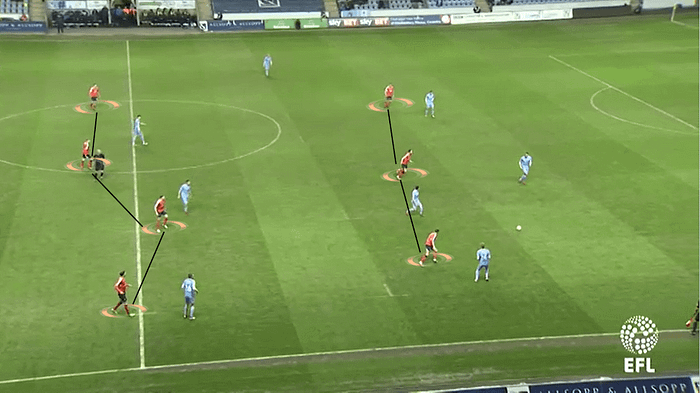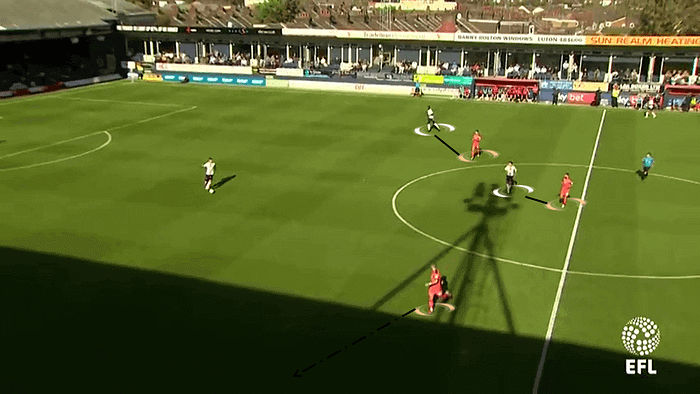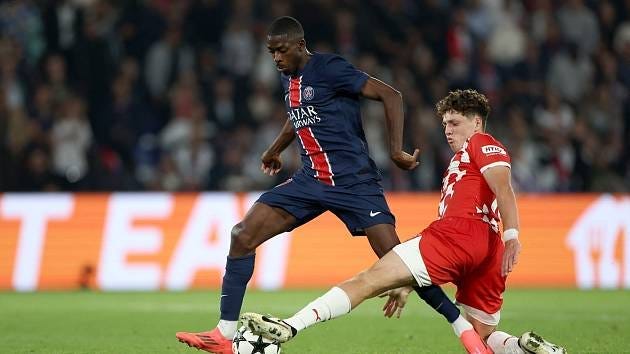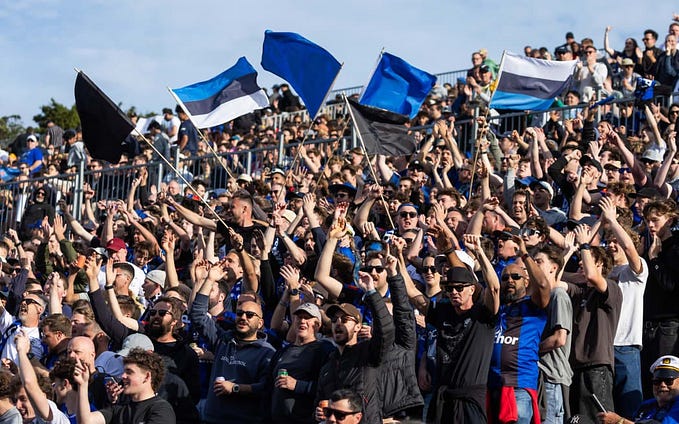
(This article was written in June 2019 after Luton got promoted to the Championship for Total Football Analysis magazine. I am reposting this amid the rumours that Nathan Jones, Luton’s head coach, is heading to Southampton to replace Ralph Hasenhuttl)
Under the management of former Brighton coach Nathan Jones, The Hatters secured promotion to League One after finishing 2nd in the 2017/18 League Two. They could have clinched the title but form inconsistency saw them lose out to Accrington Stanley. But they didn’t have to wait too long to win a trophy.
Albeit the early struggle in League One, their outstanding 28-match unbeaten run helped them claimed the top spot at the end of January. On the 9th of January, Jones left the club’s manager spot and joined Stoke City. His successor, the club legend Mick Harford, who was the club’s chief scout, continued to drive the club towards the end of the season. At times, the side were thought to lose their top spot again to Barnsley, but Harford make sure it didn’t happen. On the last day of the 2018/19 EFL season, Luton won 3–1 against Oxford United while Barnsley lost 2–1 to Bristol Rovers. It was enough to secure them the title and a second promotion in two seasons.
This tactical analysis will analyse the factors behind Luton’s double promotion under Nathan Jones and Mick Harford.
Formation
Jones started to adapt the 4–1–2–1–2 formation after he started his job at Luton back in 2016. The narrow formation allowed both full-backs, in this case were Dan Potts and Jack Stacey, to constantly overlap and join the attack. Both strikers also had the options of occupied the half-spaces and left the central area for the attacking midfielder. They could also stick to the central space and wait for the ball, then Andrew Shinnie would make a run around that striker and move into the half-space.
Glen Rea’s position played a quite important role in Jones’ tactic. He was allocated the role similar to a half-back while still capable of joining the attack. Rea would drop in between the centre-backs when needed and formed a five-man defence. In attack, he would slowly moving into the opposite half and provide a passing option. Also, he could become a goal threat with his long shots from outside the 16-yard box.

Back then, they were playing very narrowly and attempted to overload on one side of the pitch when defend and attack. This would give them the numerical superiority over the opposition and allowed them to execute their plan more easily. But as shown in the shot below, they didn’t manage to attract a lot of opposition’s players into that zone. If the opposition managed to circulate the ball out of that zone, Luton could be in a vulnerable situation to concede a goal.

Coventry did managed to exploit that problem in Luton’s tactic in their clash in March 2018. They stretched their 4–4–2 formation out and focused on distributing the ball wide. Luton players were attracted to that and moved away from the central area. It allowed Coventry to overload that area and creating dangerous attack after moving the ball out of the overcrowding zone. They also tended to move the ball quickly so the opposition could not retreat into other areas. As a result, they registered nine shots on target compared to Luton’s four.
This season, Luton still played in a 4–1–2–1–2 formation with some changes. The central midfielders, Shinnie and Pelly-Ruddock Mpanzu, played with a role that similar to a mezzala. They would occupy the half-spaces in both defence and attack, leaving the central space for Rea and Elliot Lee.
At times, it feels like Luton was playing with a 4–3–3 because the attacking midfielder, Lee or George Moncur, would join the strikers above. Also, the use of an original winger like Harry Cornick and Kazenga LuaLua as strikers allowed him to drift wide and providing an option.

Build-up and attacking play
Luton tended to build their attacks from the back, creating time for the full-backs to locate themselves high up the pitch. Last season, beside the centre-backs, left-back James Justin and the defensive midfielder, either Rea or Flynn Downes would join the build-up like the shot below. They would create passing triangles while circulating the ball up the pitch.
Justin could become an option if they wanted to change the attacking direction as he has the ability to dribble the ball. The build-up was somewhat a trap to attract as many opposition’s players into their own half as possible. It would create more spaces for their teammates to move in and make passes.
They also spread out while still keeping the moderate distance between each other. It kept the chance of a successful pass at a high level and not putting the defensive players in a vulnerable situation. This type of build-up situations put Luton into an active state when in possession and hard to break them down.

This season, the build-up remained unchanged. But with Justin spending more time on the other side of the pitch, only three players were left to play out from the back. Another twist is that Mpanzu tended to drop deep and receive the ball rather than Rea. Both players would switch position with each other and contributed to different aspects of Luton’s attack.
As usual, both centre-backs, now Matty Pearson and Sonny Bradley, would still spread out. In the shot below, Reeves pushed up and tried to prevent the build-up while Lyle Taylor located near the area and was ready to tackle the ball from Luton’s defenders. Because of the centre-backs movement, James Shea had two available passing options in this build-up.

Another option for Shea in that situation was kicking the ball up field. In similar situations, Shea also chose that option as he felt he could start a quick attack. He would aim to kick the ball in the middle of the midfield line and the defensive line for Luton’s strikers to pick it up. However, a decent amount of them was cleared and claimed by the opposition’s players.
In the final third, Luton usually played with a high tempo in order to frustrate the opposition’s defenders. Combining with their intelligent movements, they moved the ball much faster and created more chances as a result.
The team have the tendency of attacking down the flanks which also involved the high positioned wing-backs Justin and Stacey. As mentioned, they usually make overlaps down the flanks and wait for the ball. While the midfielders and strikers occupied the half-spaces and moving inwards and outwards the central spaces, they stayed out wide and made crosses into the box. Usually, a low cross is their favourite option as it allowed Luton’s strikers to react quickly and caused surprise for the opposition’s goalkeeper.

When building attacks down the flanks, the opposition also attempted to press the full-backs and eliminated an attacking option from Luton. They wanted to force the ball carrier to make a back pass and restart the build-up. It also allowed them to reshape and focus more on prevented the same thing to happen.
Instead of following the opposition’s intension, they chose another option. When the full-backs stretched the play, he tended to wait outside the box for an early cross or a lay-off. If he couldn’t put a cross into the box, his teammates would move towards him and provide passing options. Although it would require the players to move out of their original position, still, the attack would not be interrupted.

Pressing style and defensive structure
Jones had developed a high pressing game during his time at Luton. He instructed his players to create three separate pressing lines with different responsibilities. The strikers and the attacking midfielder formed the first line and they aimed to press the opposition’s defenders and prevent them from playing out from the back.
The second line was the midfielders. They would locate themselves near the halfway line and provide supports for the strikers. If the opponent bypassed the press from the first line, the midfielders would move up and put pressure on the opposition’s players. If Luton was playing against a team that has the tendency to build attacks down the wings, either wing-back would push up and join the midfielders. By doing so, he has closed an attacking option and forced the opponents to play long balls.

While the players pressed, Jones also encouraged them to man-mark and eliminate passing options around the ball carrier. Although he was left with free spaces, he couldn’t do much beside playing a long pass into Luton’s half. When that happened, the high defensive line, which was the third line, that consisted of Sonny Bradley and Matty Pearson would move into the middle third and clear the ball.

Inside their own half, Luton players usually created a narrow low-block that looks similar to a 4–3–1–2 formation which was demonstrated in the shot below. They aimed to overload the middle area while capable of shifting across the field to defend wide attacks. The central midfielders dropped deep and stretched out to occupy the half-spaces and the wide spaces. The full-backs would try and maintain the defensive line, but still able to drift wide when needed.
The attacking midfielder usually got left out of the defensive structure, but he still contributed in preventing the ball from reaching Luton’s goal. He constantly followed the ball, track the ball carrier’s run and signalled for supports from his teammates. As the structure got stretched out, he must be able to fill in the free spaces that was opened up.

But in some situations where the attacking midfielder must fulfilled both responsibilities, he had no choice but to follow the ball carrier. It would leave a massive space inside Luton’s final third and the opposition’s players could easy capitalise that to create a chance.
In the shot below, notice how Luton players were moving towards and paying attention on the ball carrier. Meanwhile, Coventry have created spaces through the movements of their players. This also put at least three players in an active state to move into that space. Against teams that have wide attacking width, Luton usually struggle to defend and keep their formation shape. Many Championship teams played in the same way that Coventry did in the match and Luton need to think of a solution to deal with this problem.

Conclusion
It is undoubtedly that Luton have played a very attractive and fast-tempo football throughout the last two seasons. They have scored an overwhelming 94 and 90 goals respectively and only conceded 46 and 42 goals. It showed the improvement in defence for Luton while the attack still proving their lethality in front of goal. But the Championship environment is quite different with what they have used to in League One and League Two. Their biggest challenge coming in to the new season is to continue the high confidence after the back-to-back promotion and keep their performance at a high quality to keep up with the Championship pace.
This summer, they have appointed Graeme Jones as Luton’s manager to replace Mick Harford. Graeme had spent time being the assistant of Roberto Martínez at Swansea, Everton and the Belgium national team. He had also worked with Darren Moore at West Bromwich Albion last season. The experience that he has would surely help The Hatters adapt to the Championship and hopefully get off to a good start next season.








